
Calculus Volume 2
2nd Edition
ISBN: 9781630182021
Author: Gilbert Strang, Edwin Jed Herman
Publisher: OpenStax College.
expand_more
expand_more
format_list_bulleted
Concept explainers
Textbook Question
Chapter 4.2, Problem 89E
Match the direction field with the given differential equations. Explain your selections.
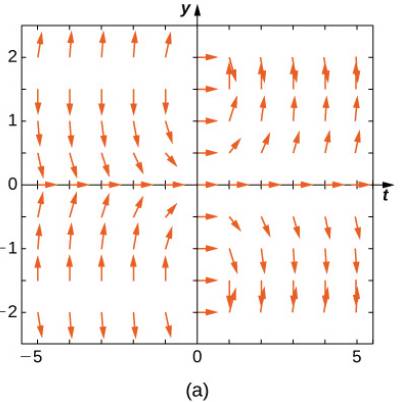
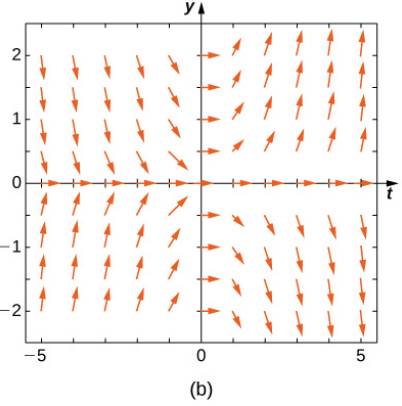
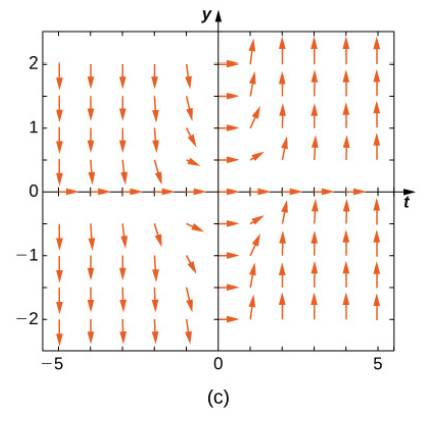
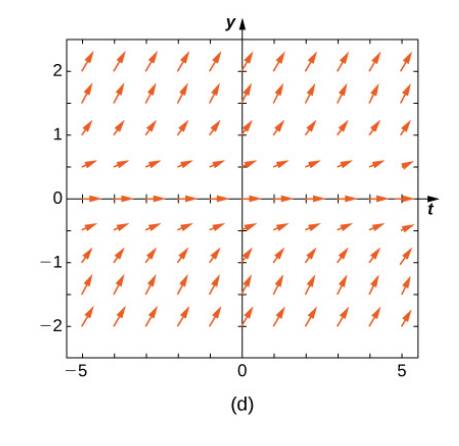
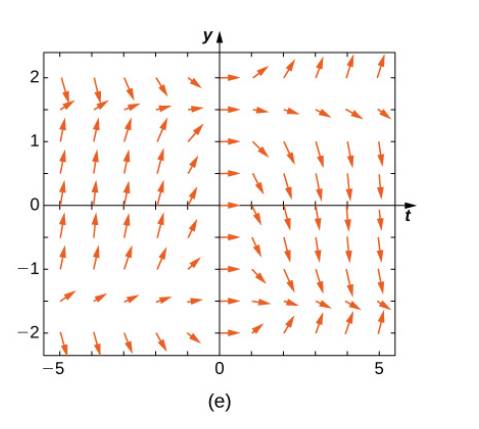
89.
Expert Solution & Answer
Want to see the full answer?
Check out a sample textbook solution
Students have asked these similar questions
Prove that
1) | RxX (T) | << = (R₁ " + R$)
2) find Laplalse trans.
of Normal dis:
3) Prove thy t
/Rx (z) | < | Rx (0)\
4) show that evary
algebra is algebra
or not.
=
5 37
A 4 8 0.5
06
9
For each of the time series, construct a line chart of the data and identify the characteristics of the time series (that is, random, stationary, trend, seasonal, or cyclical).
Month Number (Thousands)Dec 1991 65.60Jan 1992 71.60Feb 1992 78.80Mar 1992 111.60Apr 1992 107.60May 1992 115.20Jun 1992 117.80Jul 1992 106.20Aug 1992 109.90Sep 1992 106.00Oct 1992 111.80Nov 1992 84.50Dec 1992 78.60Jan 1993 70.50Feb 1993 74.60Mar 1993 95.50Apr 1993 117.80May 1993 120.90Jun 1993 128.50Jul 1993 115.30Aug 1993 121.80Sep 1993 118.50Oct 1993 123.30Nov 1993 102.30Dec 1993 98.70Jan 1994 76.20Feb 1994 83.50Mar 1994 134.30Apr 1994 137.60May 1994 148.80Jun 1994 136.40Jul 1994 127.80Aug 1994 139.80Sep 1994 130.10Oct 1994 130.60Nov 1994 113.40Dec 1994 98.50Jan 1995 84.50Feb 1995 81.60Mar 1995 103.80Apr 1995 116.90May 1995 130.50Jun 1995 123.40Jul 1995 129.10Aug 1995…
Chapter 4 Solutions
Calculus Volume 2
Ch. 4.1 - Determine the order of the following differential...Ch. 4.1 - Determine the order of the following differential...Ch. 4.1 - Determine the order of the following differential...Ch. 4.1 - Determine the order of the following differential...Ch. 4.1 - Determine the order of the following differential...Ch. 4.1 - Determine the order of the following differential...Ch. 4.1 - Determine the order of the following differential...Ch. 4.1 - Verify that the following functions are solutions...Ch. 4.1 - Verify that the following functions are solutions...Ch. 4.1 - Verify that the following functions are solutions...
Ch. 4.1 - Verify that the following functions are solutions...Ch. 4.1 - Verify that the following functions are solutions...Ch. 4.1 - Verify that the following functions are solutions...Ch. 4.1 - Verify that the following functions are solutions...Ch. 4.1 - Verify that the following functions are solutions...Ch. 4.1 - Verify that the following functions are solutions...Ch. 4.1 - Verify that the following functions are solutions...Ch. 4.1 - Verify the following general solutions and find...Ch. 4.1 - Verify the following general solutions and find...Ch. 4.1 - Verify the following general solutions and find...Ch. 4.1 - Verify the following general solutions and find...Ch. 4.1 - Verify the following general solutions and find...Ch. 4.1 - Verify the following general solutions and find...Ch. 4.1 - Verify the following general solutions and find...Ch. 4.1 - Verify the following general solutions and find...Ch. 4.1 - Verify the following general solutions and find...Ch. 4.1 - Verify the following general solutions and find...Ch. 4.1 - For the following problems, find the general...Ch. 4.1 - For the following problems, find the general...Ch. 4.1 - For the following problems, find the general...Ch. 4.1 - For the following problems, find the general...Ch. 4.1 - For the following problems, find the general...Ch. 4.1 - For the following problems, find the general...Ch. 4.1 - For the following problems, find the general...Ch. 4.1 - For the following problems, find the general...Ch. 4.1 - For the following problems, find the general...Ch. 4.1 - For the following problems, find the general...Ch. 4.1 - Solve the following initial-value problems...Ch. 4.1 - Solve the following initial-value problems...Ch. 4.1 - Solve the following initial-value problems...Ch. 4.1 - Solve the following initial-value problems...Ch. 4.1 - Solve the following initial-value problems...Ch. 4.1 - Solve the following initial-value problems...Ch. 4.1 - Solve the following initial-value problems...Ch. 4.1 - Solve the following initial-value problems...Ch. 4.1 - Solve the following initial-value problems...Ch. 4.1 - Solve the following initial-value problems...Ch. 4.1 - Recall that a family of solutions includes...Ch. 4.1 - Recall that a family of solutions includes...Ch. 4.1 - Recall that a family of solutions includes...Ch. 4.1 - Recall that a family of solutions includes...Ch. 4.1 - Recall that a family of solutions includes...Ch. 4.1 - Recall that a family of solutions includes...Ch. 4.1 - Recall that a family of solutions includes...Ch. 4.1 - Recall that a family of solutions includes...Ch. 4.1 - Recall that a family of solutions includes...Ch. 4.1 - Recall that a family of solutions includes...Ch. 4.1 - Recall that a family of solutions includes...Ch. 4.1 - Recall that a family of solutions includes...Ch. 4.1 - Recall that a family of solutions includes...Ch. 4.1 - Recall that a family of solutions includes...Ch. 4.1 - Recall that a family of solutions includes...Ch. 4.1 - Recall that a family of solutions includes...Ch. 4.1 - Recall that a family of solutions includes...Ch. 4.1 - Recall that a family of solutions includes...Ch. 4.2 - For the following problems, use the direction...Ch. 4.2 - For the following problems, use the direction...Ch. 4.2 - For the following problems, use the direction...Ch. 4.2 - For the following problems, use the direction...Ch. 4.2 - For the following problems, use the direction...Ch. 4.2 - For the following problems, use the direction...Ch. 4.2 - For the following problems, use the direction...Ch. 4.2 - For the following problems, use the direction...Ch. 4.2 - Draw the direction field for the following...Ch. 4.2 - Draw the direction field for the following...Ch. 4.2 - Draw the direction field for the following...Ch. 4.2 - Draw the direction field for the following...Ch. 4.2 - Draw the direction field for the following...Ch. 4.2 - Draw the directional field for the following...Ch. 4.2 - Draw the directional field for the following...Ch. 4.2 - Draw the directional field for the following...Ch. 4.2 - Draw the directional field for the following...Ch. 4.2 - Draw the directional field for the following...Ch. 4.2 - Match the direction field with the given...Ch. 4.2 - Match the direction field with the given...Ch. 4.2 - Match the direction field with the given...Ch. 4.2 - Match the direction field with the given...Ch. 4.2 - Match the direction field with the given...Ch. 4.2 - Match the direction field with the given...Ch. 4.2 - Match the direction field with the given...Ch. 4.2 - Match the direction field with the given...Ch. 4.2 - Match the direction field with the given...Ch. 4.2 - Match the direction field with the given...Ch. 4.2 - Estimate the following solutions using Euler’s...Ch. 4.2 - Estimate the following solutions using Euler’s...Ch. 4.2 - WEstimate the following solutions using Euler’s...Ch. 4.2 - Estimate the following solutions using Euler’s...Ch. 4.2 - Estimate the following solutions using Euler’s...Ch. 4.2 - Estimate the following solutions using Euler’s...Ch. 4.2 - Estimate the following solutions using Euler’s...Ch. 4.2 - Estimate the following solutions using Euler’s...Ch. 4.2 - Estimate the following solutions using Euler’s...Ch. 4.2 - Estimate the following solutions using Euler’s...Ch. 4.2 - Differential equations can be used to model...Ch. 4.2 - Differential equations can be used to model...Ch. 4.2 - Differential equations can be used to model...Ch. 4.2 - Differential equations can be used to model...Ch. 4.2 - Differential equations can be used to model...Ch. 4.2 - Differential equations can be used to model...Ch. 4.2 - Differential equations can be used to model...Ch. 4.2 - Differential equations can be used to model...Ch. 4.2 - Differential equations can be used to model...Ch. 4.2 - Differential equations can be used to model...Ch. 4.2 - Consider the initial-value problem y' = 2y, y(0) =...Ch. 4.2 - Consider the initial-value problem y' = 2y, y(0) =...Ch. 4.2 - Consider the initial-value problem y' = 2y, y(0) =...Ch. 4.2 - Consider the initial-value problem y' = 2y, y(0) =...Ch. 4.2 - Consider the initial-value problem y' = 2y, y(0) =...Ch. 4.3 - Solve the following initial-value problems with...Ch. 4.3 - Solve the following initial-value problems with...Ch. 4.3 - Solve the following initial-value problems with...Ch. 4.3 - Solve the following initial-value problems with...Ch. 4.3 - Find the general solution to the differential...Ch. 4.3 - Find the general solution to the differential...Ch. 4.3 - Find the general solution to the differential...Ch. 4.3 - Find the general solution to the differential...Ch. 4.3 - Find the general solution to the differential...Ch. 4.3 - Find the general solution to the differential...Ch. 4.3 - Find the general solution to the differential...Ch. 4.3 - Find the general solution to the differential...Ch. 4.3 - Find the general solution to the differential...Ch. 4.3 - Find the general solution to the differential...Ch. 4.3 - Find the solution to the initial-value problem....Ch. 4.3 - Find the solution to the initial-value problem....Ch. 4.3 - Find the solution to the initial-value problem....Ch. 4.3 - Find the solution to the initial-value problem....Ch. 4.3 - Find the solution to the initial-value problem....Ch. 4.3 - Find the solution to the initial-value problem....Ch. 4.3 - Find the solution to the initial-value problem....Ch. 4.3 - Find the solution to the initial-value problem....Ch. 4.3 - Find the solution to the initial-value problem....Ch. 4.3 - Find the solution to the initial-value problem....Ch. 4.3 - For the following problems, use a software program...Ch. 4.3 - For the following problems, use a software program...Ch. 4.3 - For the following problems, use a software program...Ch. 4.3 - For the following problems, use a software program...Ch. 4.3 - For the following problems, use a software program...Ch. 4.3 - Most drugs in the bloodstream decay according to...Ch. 4.3 - A drug is administered intravenously to a patient...Ch. 4.3 - [T] How often should a drug be taken if its dose...Ch. 4.3 - A tank contains 1 kilogram of salt dissolved in...Ch. 4.3 - A tank containing 10 kilograms of salt dissolved...Ch. 4.3 - [T] For the preceding problem, find flow much salt...Ch. 4.3 - Torricelli’s law states that for a water tank with...Ch. 4.3 - For the preceding problem, determine how long it...Ch. 4.3 - For the following problems, use Newton’s law of...Ch. 4.3 - For the following problems, use Newton’s law of...Ch. 4.3 - For the following problems, use Newton’s law of...Ch. 4.3 - For the following problems, use Newton’s law of...Ch. 4.3 - For the following problems, use Newton’s law of...Ch. 4.3 - For the following problems, use Newton’s law of...Ch. 4.3 - For the following problems, use Newton’s law of...Ch. 4.3 - For the following problems, use Newton’s law of...Ch. 4.3 - For the following problems, use Newton’s law of...Ch. 4.3 - For the following problems, use Newton’s law of...Ch. 4.3 - For the following problems, use Newton’s law of...Ch. 4.3 - For the following problems, use Newton’s law of...Ch. 4.4 - Student Project: Logistic Equation with a...Ch. 4.4 - Student Project: Logistic Equation with a...Ch. 4.4 - Student Project: Logistic Equation with a...Ch. 4.4 - Student Project: Logistic Equation with a...Ch. 4.4 - For the following problems, consider the logistic...Ch. 4.4 - For the following problems, consider the logistic...Ch. 4.4 - For the following problems, consider the logistic...Ch. 4.4 - For the following problems, consider the logistic...Ch. 4.4 - For the following problems, consider the logistic...Ch. 4.4 - A population of deer inside a park has a carrying...Ch. 4.4 - A population of frogs in a pond has a growth rate...Ch. 4.4 - [T] Bacteria grow at a rate of 2O per hour in a...Ch. 4.4 - [T] Rabbits in a park have an initial population...Ch. 4.4 - [T] Two monkeys are placed on an island. After 5...Ch. 4.4 - [T] A butterfly sanctuary is built that can hold...Ch. 4.4 - The following problems consider the logistic...Ch. 4.4 - The following problems consider the logistic...Ch. 4.4 - The following problems consider the logistic...Ch. 4.4 - The following problems consider the logistic...Ch. 4.4 - The following problems consider the logistic...Ch. 4.4 - It is more likely that the amount of fishing is...Ch. 4.4 - It is more likely that the amount of fishing is...Ch. 4.4 - It is more likely that the amount of fishing is...Ch. 4.4 - It is more likely that the amount of fishing is...Ch. 4.4 - It is more likely that the amount of fishing is...Ch. 4.4 - The following problems add in a minimal threshold...Ch. 4.4 - The following problems add in a minimal threshold...Ch. 4.4 - The following problems add in a minimal threshold...Ch. 4.4 - The following problems add in a minimal threshold...Ch. 4.4 - The following problems add in a minimal threshold...Ch. 4.4 - The following questions consider the Gompertz...Ch. 4.4 - The following questions consider the Gompertz...Ch. 4.4 - The following questions consider the Gompertz...Ch. 4.4 - The following questions consider the Gompertz...Ch. 4.4 - The following questions consider the Gompertz...Ch. 4.4 - The following questions consider the Gompertz...Ch. 4.4 - The following questions consider the Gompertz...Ch. 4.4 - The following questions consider the Gompertz...Ch. 4.4 - The following questions consider the Gompertz...Ch. 4.4 - Below is a table of the populations of whooping...Ch. 4.4 - Below is a table of the populations of whooping...Ch. 4.4 - Below is a table of the populations of whooping...Ch. 4.4 - Below is a table of the populations of whooping...Ch. 4.4 - Below is a table of the populations of whooping...Ch. 4.5 - Are the following differential equations linear?...Ch. 4.5 - Are the following differential equations linear?...Ch. 4.5 - Are the following differential equations linear?...Ch. 4.5 - Are the following differential equations linear?...Ch. 4.5 - Are the following differential equations linear?...Ch. 4.5 - Write the following first-order differential...Ch. 4.5 - Write the following first-order differential...Ch. 4.5 - Write the following first-order differential...Ch. 4.5 - Write the following first-order differential...Ch. 4.5 - Write the following first-order differential...Ch. 4.5 - What are the integrating factors for the following...Ch. 4.5 - What are the integrating factors for the following...Ch. 4.5 - What are the integrating factors for the following...Ch. 4.5 - What are the integrating factors for the following...Ch. 4.5 - What are the integrating factors for the following...Ch. 4.5 - Solve the following differential equations by...Ch. 4.5 - Solve the following differential equations by...Ch. 4.5 - Solve the following differential equations by...Ch. 4.5 - Solve the following differential equations by...Ch. 4.5 - Solve the following differential equations by...Ch. 4.5 - Solve the following differential equations by...Ch. 4.5 - Solve the following differential equations by...Ch. 4.5 - Solve the following differential equations by...Ch. 4.5 - Solve the following differential equations by...Ch. 4.5 - Solve the following differential equations by...Ch. 4.5 - Solve the following differential equations. Use...Ch. 4.5 - Solve the following differential equations. Use...Ch. 4.5 - Solve the following differential equations. Use...Ch. 4.5 - Solve the following differential equations. Use...Ch. 4.5 - Solve the following differential equations. Use...Ch. 4.5 - Solve the following differential equations. Use...Ch. 4.5 - Solve the following differential equations. Use...Ch. 4.5 - Solve the following differential equations. Use...Ch. 4.5 - Solve the following initial-value problems by...Ch. 4.5 - Solve the following initial-value problems by...Ch. 4.5 - Solve the following initial-value problems by...Ch. 4.5 - Solve the following initial-value problems by...Ch. 4.5 - Solve the following initial-value problems by...Ch. 4.5 - Solve the following initial-value problems by...Ch. 4.5 - Solve the following initial-value problems by...Ch. 4.5 - Solve the following initial-value problems by...Ch. 4.5 - Solve the following initial-value problems by...Ch. 4.5 - Solve the following initial-value problems by...Ch. 4.5 - A falling object of mass m can reach terminal...Ch. 4.5 - Using your expression from the preceding problem,...Ch. 4.5 - [T] Using your equation for terminal velocity,...Ch. 4.5 - A more accurate way to describe terminal velocity...Ch. 4.5 - Using your expression from the preceding problem,...Ch. 4.5 - [T] Using your equation for terminal velocity,...Ch. 4.5 - For the following problems, determine how...Ch. 4.5 - For the following problems, determine how...Ch. 4.5 - For the following problems, determine how...Ch. 4.5 - For the following problems, determine how...Ch. 4.5 - For the following problems, determine how...Ch. 4 - True or False? Justify your answer with a proof or...Ch. 4 - True or False? Justify your answer with a proof or...Ch. 4 - True or False? Justify your answer with a proof or...Ch. 4 - True or False? Justify your answer with a proof or...Ch. 4 - For the following problems, find the general...Ch. 4 - For the following problems, find the general...Ch. 4 - For the following problems, find the general...Ch. 4 - For the following problems, find the general...Ch. 4 - For the following problems, find the general...Ch. 4 - For the following problems, find the general...Ch. 4 - For the following problems, find the solution to...Ch. 4 - For the following problems, find the solution to...Ch. 4 - For the following problems, find the solution to...Ch. 4 - For the following problems, find the solution to...Ch. 4 - For the following problems, find the solution to...Ch. 4 - For the following problems, find the solution to...Ch. 4 - For the following problems, draw the directional...Ch. 4 - For the following problems, draw the directional...Ch. 4 - For the following problems, use Euler’s Method...Ch. 4 - For the following problems, use Euler’s Method...Ch. 4 - For the following problems, set up and solve the...Ch. 4 - For the following problems, set up and solve the...Ch. 4 - For the following problems, set up and solve the...Ch. 4 - For the following problems, set up and solve the...Ch. 4 - For the following problems, set up and solve the...Ch. 4 - For the following problems, set up and solve the...Ch. 4 - For the following problems, set up and solve the...Ch. 4 - For the following problems, set up and solve the...Ch. 4 - For the following problems, set up and solve the...
Additional Math Textbook Solutions
Find more solutions based on key concepts
Second derivatives Find d2ydx2. 35. e2y + x = y
Calculus: Early Transcendentals (2nd Edition)
Twenty five people, consisting of 15 women and 10 men are lined up in a random order. Find the probability that...
A First Course in Probability (10th Edition)
Find the areas of the regions enclosed by the lines and curves in Exercises 65–74.
65. y = x2 − 2 and y = 2
University Calculus: Early Transcendentals (4th Edition)
TRY IT YOURSELF 1
Find the mean of the points scored by the 51 winning teams listed on page 39.
Elementary Statistics: Picturing the World (7th Edition)
Significance with Range Rule of Thumb. In Exercises 29 and 30, assume that different groups of couples use the ...
Elementary Statistics (13th Edition)
Knowledge Booster
Learn more about
Need a deep-dive on the concept behind this application? Look no further. Learn more about this topic, subject and related others by exploring similar questions and additional content below.Similar questions
- For each of the time series, construct a line chart of the data and identify the characteristics of the time series (that is, random, stationary, trend, seasonal, or cyclical). Year Month Units1 Nov 42,1611 Dec 44,1862 Jan 42,2272 Feb 45,4222 Mar 54,0752 Apr 50,9262 May 53,5722 Jun 54,9202 Jul 54,4492 Aug 56,0792 Sep 52,1772 Oct 50,0872 Nov 48,5132 Dec 49,2783 Jan 48,1343 Feb 54,8873 Mar 61,0643 Apr 53,3503 May 59,4673 Jun 59,3703 Jul 55,0883 Aug 59,3493 Sep 54,4723 Oct 53,164arrow_forwardConsider the table of values below. x y 2 64 3 48 4 36 5 27 Fill in the right side of the equation y= with an expression that makes each ordered pari (x,y) in the table a solution to the equation.arrow_forwardsolving for xarrow_forward
- Consider the table of values below. x y 2 63 3 70 4 77 5 84 Fill in the right side of the equation y= with an expression that makes each ordered pari (x,y) in the table a solution to the equation.arrow_forwardfind the value of each variablearrow_forwardConsider the following system of equations, Ax=b : x+2y+3z - w = 2 2x4z2w = 3 -x+6y+17z7w = 0 -9x-2y+13z7w = -14 a. Find the solution to the system. Write it as a parametric equation. You can use a computer to do the row reduction. b. What is a geometric description of the solution? Explain how you know. c. Write the solution in vector form? d. What is the solution to the homogeneous system, Ax=0?arrow_forward
- 2. Find a matrix A with the following qualities a. A is 3 x 3. b. The matrix A is not lower triangular and is not upper triangular. c. At least one value in each row is not a 1, 2,-1, -2, or 0 d. A is invertible.arrow_forwardFind the exact area inside r=2sin(2\theta ) and outside r=\sqrt(3)arrow_forwardHigh Cholesterol: A group of eight individuals with high cholesterol levels were given a new drug that was designed to lower cholesterol levels. Cholesterol levels, in milligrams per deciliter, were measured before and after treatment for each individual, with the following results: Individual Before 1 2 3 4 5 6 7 8 237 282 278 297 243 228 298 269 After 200 208 178 212 174 201 189 185 Part: 0/2 Part 1 of 2 (a) Construct a 99.9% confidence interval for the mean reduction in cholesterol level. Let a represent the cholesterol level before treatment minus the cholesterol level after. Use tables to find the critical value and round the answers to at least one decimal place.arrow_forward
- Please could you explain how to do integration by parts for this question in detail pleasearrow_forwardThere were 426 books sold in one week. The number of biology books sold was 5 times that of the number of psychology books. How many books each were sold?arrow_forwardI worked out the answers for most of this, and provided the answers in the tables that follow. But for the total cost table, I need help working out the values for 10%, 11%, and 12%. A pharmaceutical company produces the drug NasaMist from four chemicals. Today, the company must produce 1000 pounds of the drug. The three active ingredients in NasaMist are A, B, and C. By weight, at least 8% of NasaMist must consist of A, at least 4% of B, and at least 2% of C. The cost per pound of each chemical and the amount of each active ingredient in one pound of each chemical are given in the data at the bottom. It is necessary that at least 100 pounds of chemical 2 and at least 450 pounds of chemical 3 be used. a. Determine the cheapest way of producing today’s batch of NasaMist. If needed, round your answers to one decimal digit. Production plan Weight (lbs) Chemical 1 257.1 Chemical 2 100 Chemical 3 450 Chemical 4 192.9 b. Use SolverTable to see how much the percentage of…arrow_forward
arrow_back_ios
SEE MORE QUESTIONS
arrow_forward_ios
Recommended textbooks for you
 Discrete Mathematics and Its Applications ( 8th I...MathISBN:9781259676512Author:Kenneth H RosenPublisher:McGraw-Hill Education
Discrete Mathematics and Its Applications ( 8th I...MathISBN:9781259676512Author:Kenneth H RosenPublisher:McGraw-Hill Education Mathematics for Elementary Teachers with Activiti...MathISBN:9780134392790Author:Beckmann, SybillaPublisher:PEARSON
Mathematics for Elementary Teachers with Activiti...MathISBN:9780134392790Author:Beckmann, SybillaPublisher:PEARSON
 Thinking Mathematically (7th Edition)MathISBN:9780134683713Author:Robert F. BlitzerPublisher:PEARSON
Thinking Mathematically (7th Edition)MathISBN:9780134683713Author:Robert F. BlitzerPublisher:PEARSON Discrete Mathematics With ApplicationsMathISBN:9781337694193Author:EPP, Susanna S.Publisher:Cengage Learning,
Discrete Mathematics With ApplicationsMathISBN:9781337694193Author:EPP, Susanna S.Publisher:Cengage Learning, Pathways To Math Literacy (looseleaf)MathISBN:9781259985607Author:David Sobecki Professor, Brian A. MercerPublisher:McGraw-Hill Education
Pathways To Math Literacy (looseleaf)MathISBN:9781259985607Author:David Sobecki Professor, Brian A. MercerPublisher:McGraw-Hill Education

Discrete Mathematics and Its Applications ( 8th I...
Math
ISBN:9781259676512
Author:Kenneth H Rosen
Publisher:McGraw-Hill Education

Mathematics for Elementary Teachers with Activiti...
Math
ISBN:9780134392790
Author:Beckmann, Sybilla
Publisher:PEARSON


Thinking Mathematically (7th Edition)
Math
ISBN:9780134683713
Author:Robert F. Blitzer
Publisher:PEARSON

Discrete Mathematics With Applications
Math
ISBN:9781337694193
Author:EPP, Susanna S.
Publisher:Cengage Learning,

Pathways To Math Literacy (looseleaf)
Math
ISBN:9781259985607
Author:David Sobecki Professor, Brian A. Mercer
Publisher:McGraw-Hill Education
01 - What Is A Differential Equation in Calculus? Learn to Solve Ordinary Differential Equations.; Author: Math and Science;https://www.youtube.com/watch?v=K80YEHQpx9g;License: Standard YouTube License, CC-BY
Higher Order Differential Equation with constant coefficient (GATE) (Part 1) l GATE 2018; Author: GATE Lectures by Dishank;https://www.youtube.com/watch?v=ODxP7BbqAjA;License: Standard YouTube License, CC-BY
Solution of Differential Equations and Initial Value Problems; Author: Jefril Amboy;https://www.youtube.com/watch?v=Q68sk7XS-dc;License: Standard YouTube License, CC-BY